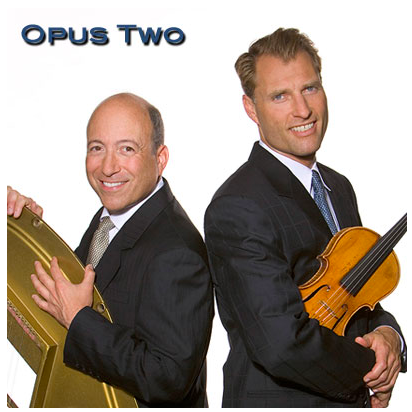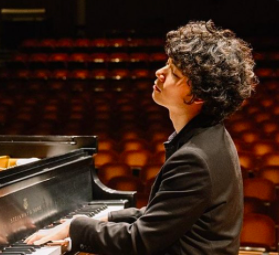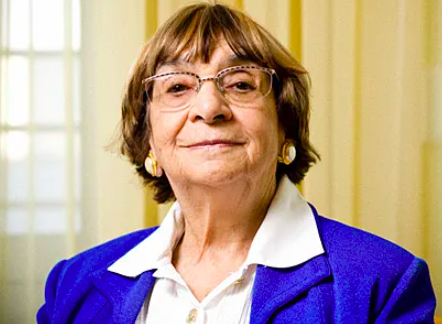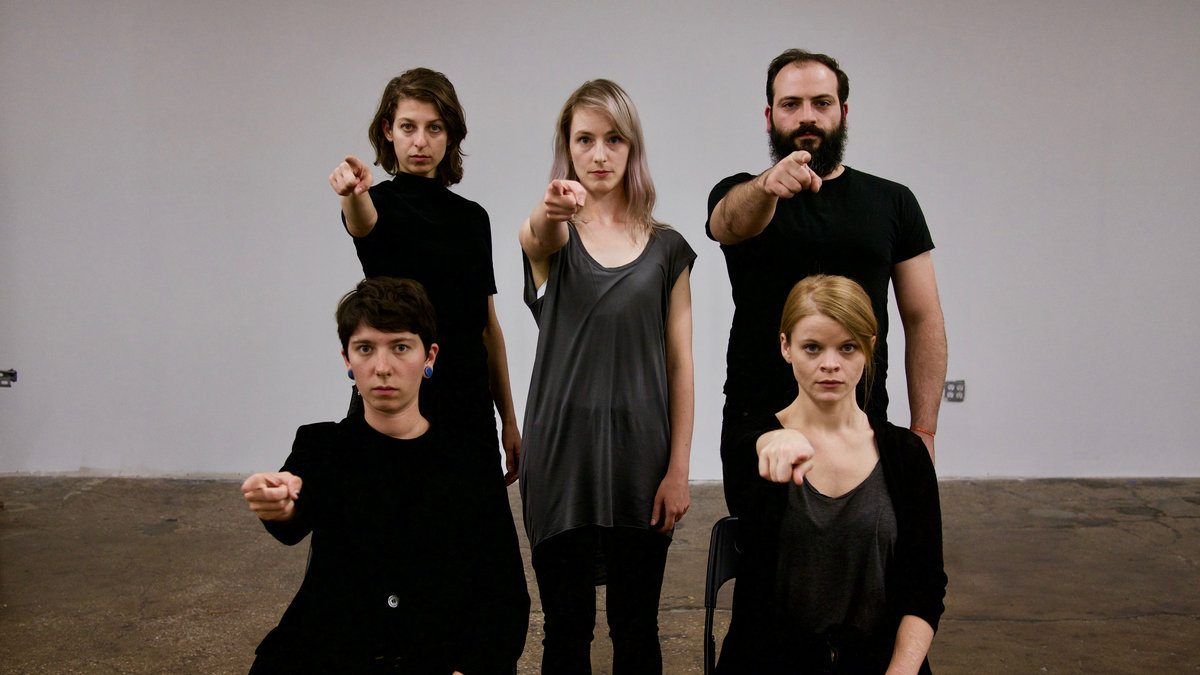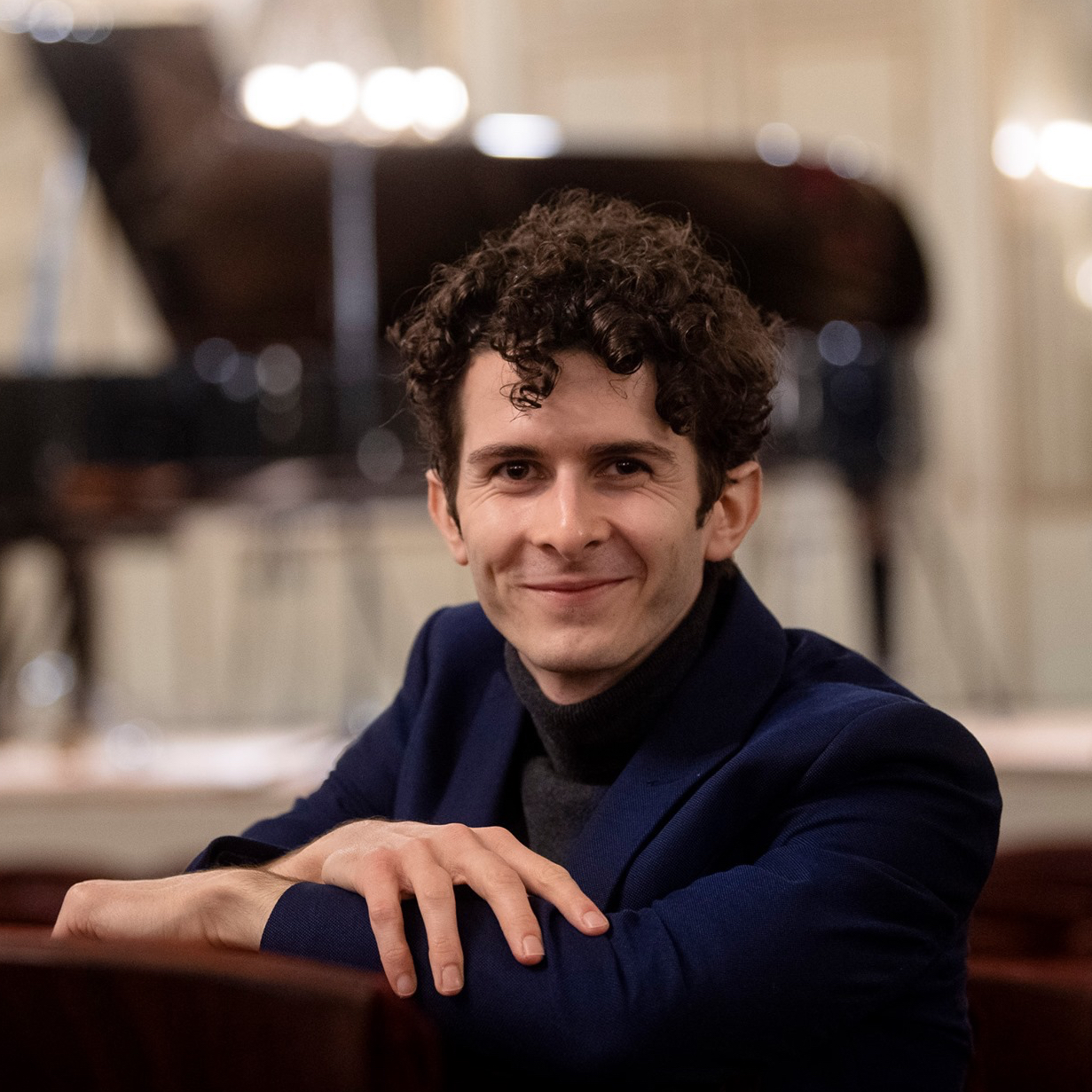Mozart
“Ah, vous dirai-je, Maman” Variations, KV 265: Six Sets of Video Performances
by Solomon Mikowsky and Piano Students (including Alumni and MSM Faculty)
Original
idea by Ahmed Alom (BM student), Administrative Director and
Coordinator
Joseph
Patrych, Technical Supervisor; Asaf Blasberg, Videographer
March
2021
Pianophiles
everywhere, take heed! If you’ve ever thought there is “one way” to
play Mozart, or if you’d like to explore multiple styles and approaches but
without combing the Internet, you have a treat in store! All on one webpage (The Twinkle Project)
at the Manhattan School of Music website, there are six video compilations
dedicated to what is called The Twinkle Project, including performances by 50 pianists
(though the website states the count is 47), each playing a variation (or two
or three of the twelve) from Mozart’s famous Variations for Piano, K. 265, on “Ah, vous dirai-je, Maman”
(the French folk song from which the “Twinkle, Twinkle” tune was
taken a half a century later). It is a mammoth project, a feat of organization
and collaboration, and a moving and awe-inspiring celebration to see and hear
fifty pianists of diverse ages, nations, and styles, uniting in tribute to
Mozart, with the common ground being their association with the Manhattan School of Music – in particular with master teacher Solomon
Mikowsky, who himself performs the theme for each set.
As
Mr. Mikowsky states on the website: “When my gifted piano student, Ahmed Alom (BM ’21),
alerted me to his idea of a video-recording of Mozart’s “Twinkle” variations
performed in collaboration with 11 of his classmates, I immediately realized
that this project would be an ideal vehicle for an expression of gratitude to
the school to which we all owe so much: MANHATTAN SCHOOL OF MUSIC! Shortly
afterwards, I decided to expand it to also encompass many alumni, including the
seven current members of MSM’s piano faculty. This has allowed me to
renew contacts with students who studied with me from as far back as 51 years
ago: more than 5 decades!” He continues to say, “The most rewarding aspect of this MSM multi-pianist
collaboration is the inspiration provided by the great composer, making the
participants realize anew Mozart’s genius and the artistic challenge that
performing 16 measures of his music entails.”
Indeed, anyone who has ever said
“it’s as easy as Twinkle, Twinkle, Little Star” (referring to the
nursery song) probably does not know Mozart’s twelve scintillating piano
variations on this theme (published in 1785), and the wide range of techniques
and expression that this work encompasses. A perfect pandemic project for an
assemblage of conservatory pianists performing virtually from locations all
over the world, it was completed March 2021, under the guidance of recording
veteran Joseph Patrych, with videographer Asaf Blasberg. It remains available
at the link above, a testament to resiliency of musicians during the pandemic
and of loyalty to their teacher, colleague, and alma mater. As cheerful as much
of the Mozart composition is, one may need a box of tissues while watching
these pianists, some in slippers, playing on instruments ranging from at-home
electronic keyboards to uprights and grands, some clearly borrowed, some by
necessity untuned, and all coping valiantly despite the blows of pandemic lockdowns
and quarantines.
Having been assigned to review this
project, I faced several challenges. Clearly there is no way to address thoroughly
all fifty pianists on six separate videos (with some overlap among them), so there
will be just brief mentions of some highights; all fifty pianists, however, are
listed at the end of this review.
Also challenging was the issue of the
very premise, which Mr. Mikowsky himself addressed, asking, “Can both unity and variety be established with this
number of performers …?” Well, to riff on the famously simplistic
definition of musical “variations” as a work in which “something
is constantly the same throughout (the theme) and something is constantly
different (the treatment of it),”
this collaboration was naturally destined to feature more of the “different”
aspect than the unity – and that is just fine. The recognizability of
“Twinkle, Twinkle” guarantees that no listener can lose the thread
(so a good choice of theme!). Furthermore, as we hear pianists from Australia, Bulgaria,
China, Cuba, Cyprus, Georgia, Greece, Israel, Korea, Russia, Slovakia, Spain, Taiwan,
Ukraine, and the USA, playing a single piece, the spirit of this entire project
emerges as one of “e pluribus unum” – a very moving experience.
Opening with the “Twinkle”
theme, octagenarian Solomon Mikowsky demonstrates that his ability to perform
is clearly undiminished, and with his meticulous portato articulation he sets a stately tone. Alumni Jie Yuan
and Kookhee Hong follow expertly,
maximizing the expressiveness of highpoints while retaining the flow. Alumna Yoon Lee takes the most
liberties with time so far, with what might be called a more Romantic approach,
and it is welcome. Inesa Sinkevych, projects the next variation with more
driving metric precision and energy, still with considerable variety for such a
short segment, and Chi-Ying Hung,brings polish and nuance in all
regards, letting Mozart’s wit shine through.
Simone Dinnerstein dazzles in Variation 6, with light and fleet fingerwork (as
many know from her Bach Goldberg Variations recording), and Kyu Yeon Kim
is also brilliant, with attention to the character of each detail bringing spirit and personality to
Variation 7. Bai Yang‘s 8th Variation has a delightful mischievous
quality to it, interesting especially in comparison with José Ramón Mendez
who takes a more solemn approach – both convincing! Ren Zhang delivers
the 9th variation with easy mastery and a beautiful ritardando at the end – as several do – which raises the recurring
question as to whether that’s a drawback
of having multiple performers share a piece (one player’s turn is coming to a
close, hence a ritard is natural, but then the piece continues, so it perhaps
oughtn’t to wind down thirteen times). In any case, this project must be
experienced differently. So, onward to Variation 10, we see Adam Kent,
sporting a Mozartean white wig (and listed in one caption as Adam
“Adameus” Kent!) just in time to remind us that, despite his highly
professional music-making, this is all in the spirit of fun!
To follow, the absolutely meltingly
beautiful Variation 11 is made more so in the hands of Yuan Sheng, who creates
such a spell that one might forget to look at the score and realize that one
reason that his ornaments sound so utterly graceful is that they are largely
his own. Mastery follows mastery with Alexandre Moutouzkine‘s final
variation, made more interesting with some
featuring of alternating registers in an almost stereophonic effect – a
fittingly rousing close!
Three encores are
included in the first video, starting with Aaron Shorr playing his own
“Alla Diabelli e Leporello” (inspired by Beethoven’s Diabelli
Variations). It is an inventive classical tribute and is played here with flair.
The second encore, for piano and orchestra (here the Havana Lyceum Orchestra),
is entitled “Mozart Dreaming of Havana.” It starts with Simone
Dinnerstein playing Mozart’s Sonata in G, K. 279, then fading and developing
with the orchestra into a dreamlike fusion of Mozart and Cuban popular song,
with various orchestral section leaders taking turns at solos. It is a
wonderfully spirited and fitting tribute to Mozart, Cuba, and to Mr. Mikowsky’s
Cuban roots, which have a great influence on his students. Under that same Latin
influence, the third encore is a song called “Mojito” sung in Chinese
by Mr. Mikowsky’s doctoral student Jiayin Li, whom I had the pleasure of
reviewing in her piano recital in late January. Not only is it extraordinary to
hear her versatility of instrument and style, but her singing has an infectiously
playful spirit that could “win the Internet” as they say. I’d
recommend grabbing a mojito and hearing it. Smiles are guaranteed.
Time limitations will keep the
following video summaries shorter, but suffice it to say that in the second
video (which is called “set 1” in the upper left corner, all the
videos being labeled differently on the site from the captions), we hear more
nicely refined phrases from Aaron Shorr, humorous Beethovenian bursts of
sound from Yoni Levyatov, some well-projected offbeat melodies from Edward
Neeman, and a lovingly rendered Variation 11 from Charis Dimaras. Mr.
Dimaras seems so well suited to its pensive quality (like Yuan Sheng), just
as Peter Fancovic seems ideal for the grand final variation, that one
starts to wonder how the musical “casting” was done. If there is not
a musical version of Casting Central, there ought to be one, and a good teacher
can fill that role, which may be what has happened here.
By the time one hears the third video
(called “Set 2” in the captions), one can be overwhelmed with emotion
by some of the out-of-tune instruments and trials that one knows are facing
these fine players. We hear impressive playing from all, but notable are the attention
to detail from Gloria Lin, the authoritative precision from Olga
Vinokur, the nicely sustained lines from Chun Wang, and the almost
operatic phrasing from Kyriakos Sourollas. Emily White‘s
Variation 6 is brilliant, but she resists excesses of speed, with a moderation
of tempo that allows one to experience the details fully. Clarity of imitative
entrances marks the playing of Willany Darias, very musical and unselfconscious.
Tapered edges and elegance characterize the performance of Elina Christova who
follows. Just as one is marveling at the kaleidoscopic range of qualities among
all of these pianists, we hear Audrey Axinn who has not only freely
ornamented Variation 11 but has practically rewritten it. One might feel a yen
to hear a more straightforward reading if this were a single-pianist
performance of the entire piece, but as it follows multiple readings of the
same music, it comes as a fascinating refreshment. Yungwook Yoo displays
tremendous finger technique in the final variation. Capping off the video is a
fantastic encore played by (and one assumes composed by) Jennifer Chu. Entitled “Mozart in
Havana” (and dedicated to Mr M’s hometown) it is essentially the “Twinkle”
melody cleverly set over a Cuban beat. It is wonderful to see such spirit and
such “thinking outside the box” especially in a time of being
relegated to living in boxes!
The fourth video (called “Set
3” in the captions) brings some more current students, and all were
excellent. Some standouts include Daniel
Hart with nice offbeat phrasing as
the music invites, Zoe Pian-Chowdhury who finds room to be personal and
expressive where it is not easy to do so, plus the fiery Jiayin Li and very
sensitive Sophiko Simsive. Ahmed Alom, whose brainchild this all
was, finishes the set in fine style, followed by that fabulous
“Mojito” encore again!
The fifth video (called
“Set 4” in the captions) features MSM faculty and alumni, and one can
only think how inspiring it must be for their current students of these
pianists to see and hear. After another theme by Mr. Mikowsky, we hear the
commanding playing of Elena Belli followed by more wizardry from Alexander
Moutouzkine (including some devilishly tricky ornaments). Daniela
Bracchi, Inesa Sinkevych, and Robin Freund-Epstein all uphold
a high standard, and the energies of Jiayin Li and Adam Kent
enliven it all.
In the sixth and final video
(“Set 5” in the captions) we hear several pianists we’ve heard already,
including Jie Yuan, Simone Dinnerstein, who now adds Variations 7
and 8, showing her more lyrical gifts (along with the previously heard Variation
6), Yuan Sheng, who shows a heartier side in Variation 4 (as well as the
previously heard Variation 11), and Ren Zheng, with his crisp and taut Variation
9. In and amongst these performances also we hear some enchanting trills from Po-Wei
Ger in Variation 3, and a very young Pre-college student, Eleni Moon,
playing Variation 5. It is especially heartening to see the youngest generation
taking up the tradition, as it bodes very well for the future of music.
In addition (we knew someone
was missing!) we hear Wael Farouk, whom I’ve had the pleasure of
reviewing on several occasions and who continues to be a joy to hear. He brings
life to Variations 2, 10 (including some special ornamentation), and a grand
No. 12 to cap off the entire project.
Congratulations are in order
to everyone involved! Congratulations to Solomon Mikowsky on this
astonishing array of very individual talents, congratulations to those
organizing and recording it all, and congratulations to MSM!
The
complete listing of performers alphabetically is (not including Solomon
Mikowsky, who played the theme): Ahmed Alom, Audrey Axinn, Elena Belli, Daniela Bracchi, Elina Christova, Jennifer Chu, Willany Darias, Charis Dimaras,
Simone Dinnerstein, Peter Fancovic, Ruiqi Fang, Wael
Farouk, Robin Freund-Epstein, Po-Wei Ger, Erica Guo, Daniel Hart, Kookhee Hong, Chi-Ying Hung, Tzu-Wei Kang, Adam Kent, Kyu Yeon Kim, Tatuka Kutsnashvili, Mijung Lee, Yoon Lee, Yoni Levyatov, Jiayin Li, Gloria
Lin, Sining
Liu, José Ramón Mendez, Eleni Moon, Alexandre Moutouzkine, Edward Neeman, Zoe Pian-Chowdhury, Yuan Sheng, Aaron Shorr, Sophiko Simsive, Inesa Sinkevych, Kyriakos Sourollas, Olga Vinokur, Chun
Wang, Emily White, Hangli Wu, Jojo Yan, Bai Yang, Yungwook
Yoo, Julian Yu, Jie Yuan, WeiWei Zhai, and Ren Zhang.
by Rorianne Schrade for New York Concert Review; New York, NY






